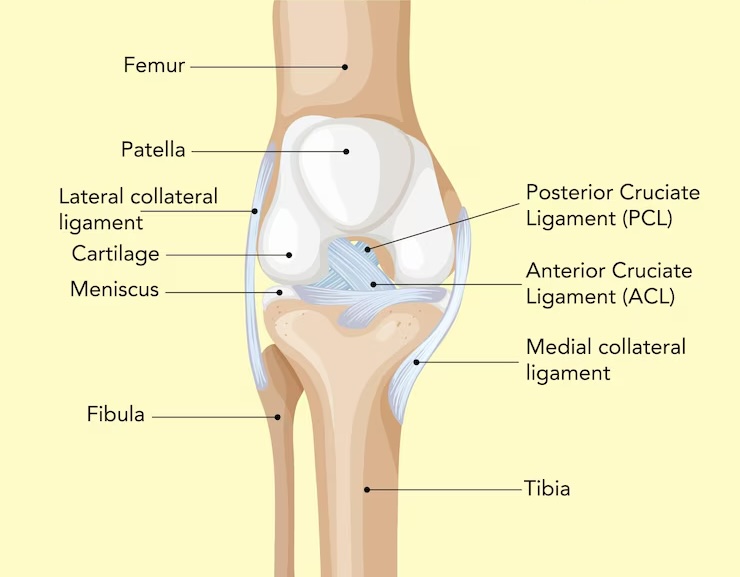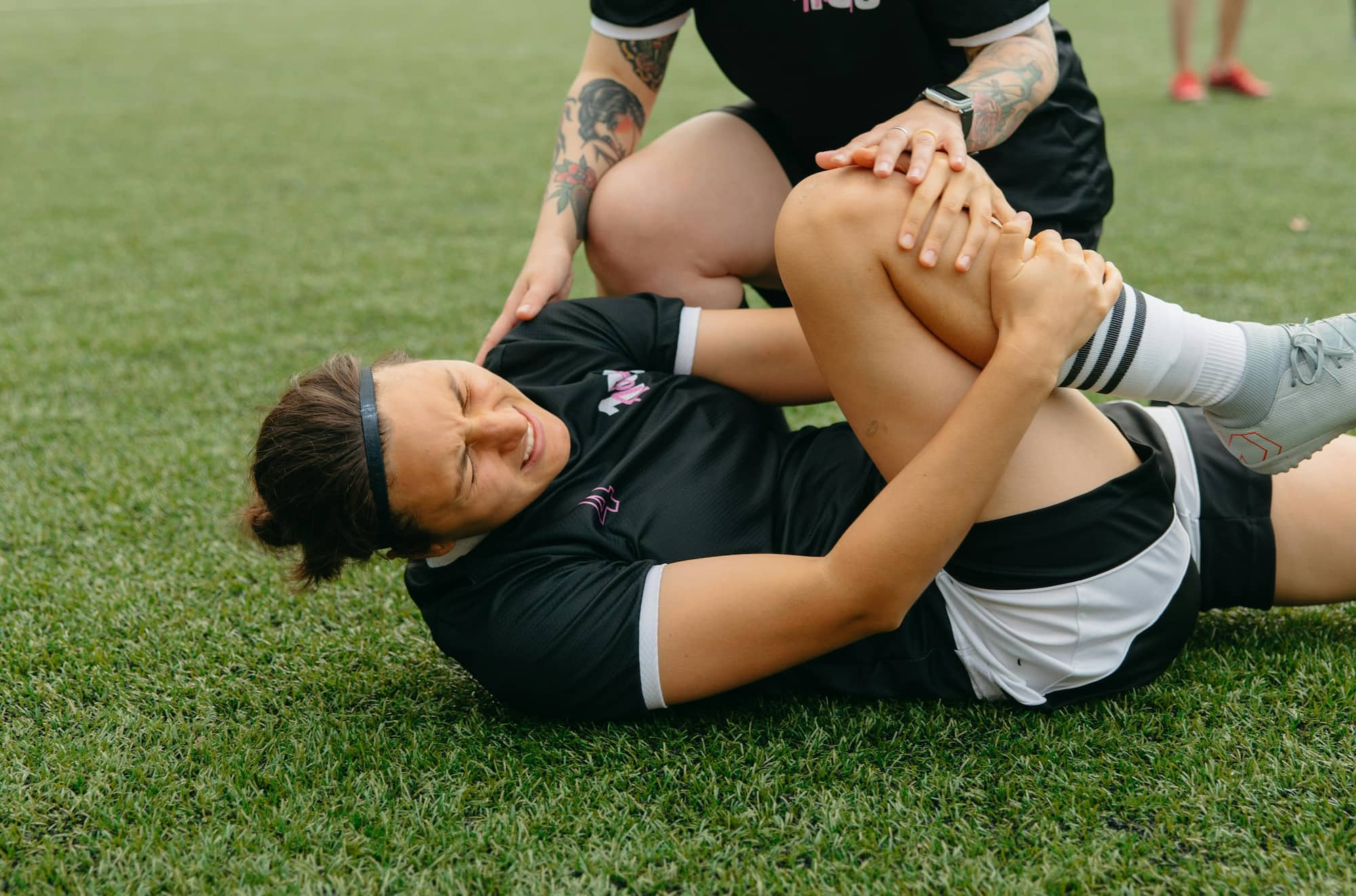The knee has a number of critical ligaments and soft tissue structures that contribute to stability:
- MCL (medial collateral ligament)
- LCL (lateral collateral ligament)
- PCL (posterior cruciate ligament)
- ACL (anterior cruciate ligament) – more on this here
- PLC (posterolateral corner)
Damage to these areas may involve a single ligament or, in severe cases, multiple ligaments known as a ‘multi-lig’ knee injury.
What causes knee ligament injuries?
Knee ligament injuries can occur from high-impact activities, sudden directional changes, or traumatic events, such as:
- Direct blows to the knee – commonly seen in contact sports
- Sudden twisting or pivoting motions – often during activities like soccer, skiing, or football
- Falls or car accidents that place extreme force on the knee joint
Multi-ligament injuries are more likely to occur in traumatic incidents and may involve damage to both cruciate and collateral ligaments.

What symptoms would I notice?
Symptoms of knee ligament injuries are often similar to those of ACL ruptures and may include a popping sensation at the time of injury, immediate or delayed swelling, instability in the knee, pain, difficulty bearing weight, or restricted range of motion.
If multiple ligaments are injured, instability is often more pronounced, and patients may experience difficulty with everyday activities like climbing stairs or walking on uneven ground.
How are knee ligament injuries diagnosed?
Your GP will review your symptoms and medical history and then offer a physical examination to assess ligament stability and joint range. Imaging tests will likely be run to rule out bone fractures or other structural damage while evaluating soft tissue damage, including ligament tears.
Together, these steps help confirm the extent of the injury and determine the best treatment approach.
Treatment options
The treatment for knee ligament injuries depends on the ligament(s) involved and the severity of the damage. Options include both non-operative and operative approaches.
Non-operative treatments
Often suitable for single-ligament injuries or injuries in patients who don’t require high-level knee stability for daily activities:
- Custom braces support the specific injured ligament, reducing strain and allowing it to heal.
- Strengthening exercises specifically for the muscles surrounding the knee improve joint stability and mobility.
- Avoiding high-impact or pivot-heavy activities can help prevent further injury during healing.
Non-operative management may be sufficient for certain isolated ligament injuries, but persistent instability or discomfort may warrant further intervention.
Operative treatments
Surgical treatment is typically recommended for multi-ligament injuries or severe instability:
- For severe ligament damage, reconstructive surgery may be performed using grafts from tendons within the patient’s body or from a donor.
- If both the ACL and MCL are damaged, the MCL is typically treated first with a brace and physical therapy, followed by ACL reconstruction if needed.
- For posterolateral corner injuries, specialised surgical procedures may be performed to restore stability.
Surgery aims to restore knee function and stability, aiming for patients to regain their previous activity levels. Read more about surgery for the most commonly reconstructed ligament, the ACL, below:
Managing knee ligament injuries
If your GP refers you to Dr Lambers, a surgical treatment plan will be created to address your specific ligament damage. Dr Lambers emphasises a conservative approach when appropriate and can offer surgical expertise for multi-ligament cases to ensure patients regain stability and function in the knee.

